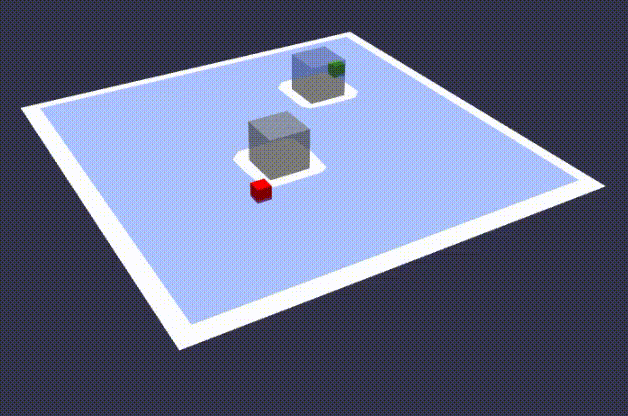1
2
3
4
5
6
7
8
9
10
11
12
13
14
15
16
17
18
19
20
21
22
23
24
25
26
27
28
29
30
31
32
33
34
35
36
37
38
39
40
41
42
43
44
45
46
47
48
49
50
51
52
53
54
55
56
57
58
59
60
61
62
63
64
65
66
67
68
69
70
71
72
73
74
75
76
77
78
79
80
81
82
83
84
85
86
87
88
89
90
91
92
93
94
95
96
97
98
99
100
101
102
103
104
105
106
107
108
109
110
111
112
113
114
115
116
117
118
119
120
121
122
123
124
125
126
127
128
129
130
131
132
133
134
135
136
137
138
139
140
141
142
143
144
145
146
147
148
149
150
151
152
153
154
155
156
157
158
159
160
161
162
163
164
165
166
167
168
169
170
171
172
173
174
175
176
177
178
179
180
181
182
183
184
185
186
187
188
189
190
191
192
193
194
195
196
197
198
199
200
201
202
203
204
205
206
207
208
209
210
211
212
213
214
215
216
217
218
219
220
221
222
223
224
225
226
227
228
229
| import * as BABYLON from "babylonjs";
import HavokPhysics from "@babylonjs/havok";
import havokWasmUrl from "../assets/HavokPhysics.wasm?url";
import Recast from "recast-detour/recast.es6.js";
const canvas = document.getElementById("renderCanvas")! as HTMLCanvasElement;
const havok = await HavokPhysics({
locateFile: () => havokWasmUrl,
});
const engine = new BABYLON.Engine(canvas, true, {
preserveDrawingBuffer: true,
stencil: true,
});
const scene = new BABYLON.Scene(engine);
scene.enablePhysics(
new BABYLON.Vector3(0, -9.8, 0),
new BABYLON.HavokPlugin(true, havok),
);
const camera = new BABYLON.ArcRotateCamera(
"Camera",
(Math.PI * 60) / 180,
(Math.PI * 120) / 180,
-60,
BABYLON.Vector3.Zero(),
scene,
);
camera.setTarget(BABYLON.Vector3.Zero());
camera.attachControl(canvas, true);
const ground = BABYLON.MeshBuilder.CreateGround(
"Ground",
{ width: 30, height: 30, subdivisionsX: 10, subdivisionsY: 10 },
scene,
);
const groundAggregate = new BABYLON.PhysicsAggregate(
ground,
BABYLON.PhysicsShapeType.BOX,
{ mass: 0, friction: 10 },
scene,
);
const light = new BABYLON.HemisphericLight(
"light",
new BABYLON.Vector3(0, 100, 0),
scene,
);
const boxMaterial = new BABYLON.StandardMaterial("BoxMaterial");
boxMaterial.diffuseColor = new BABYLON.Color3(1.0, 0, 0);
const boxMesh = BABYLON.MeshBuilder.CreateBox(
"box",
{ height: 1, width: 1, depth: 1 },
scene,
);
boxMesh.position = new BABYLON.Vector3(-5, 3, -5);
boxMesh.material = boxMaterial;
const boxPhysics = new BABYLON.PhysicsAggregate(
boxMesh,
BABYLON.PhysicsShapeType.BOX,
{ mass: 1, friction: 10 },
scene,
);
const goalBoxMaterial = new BABYLON.StandardMaterial("BoxMaterial2");
goalBoxMaterial.diffuseColor = new BABYLON.Color3(0, 1, 0);
const goalBoxMesh = BABYLON.MeshBuilder.CreateBox(
"box",
{ height: 1, width: 1, depth: 1 },
scene,
);
goalBoxMesh.position = new BABYLON.Vector3(9, 0.5, 8);
goalBoxMesh.material = goalBoxMaterial;
function createObstacles(positions: BABYLON.Vector3[]) {
const meshs = [];
const boxMaterial3 = new BABYLON.StandardMaterial("ObstaclesMaterial");
boxMaterial3.diffuseColor = new BABYLON.Color3(0.5, 0.5, 0.5);
for (let i = 0; i < positions.length; i++) {
const mesh = BABYLON.MeshBuilder.CreateBox(
"box",
{ height: 3, width: 3, depth: 3 },
scene,
);
mesh.position = positions[i];
mesh.material = boxMaterial3;
mesh.material.alpha = 0.7;
meshs.push(mesh);
new BABYLON.PhysicsAggregate(
mesh,
BABYLON.PhysicsShapeType.BOX,
{ mass: 0.05, friction: 10 },
scene,
);
}
return meshs;
}
const ObstaclePositions = [
new BABYLON.Vector3(-2, 1.5, -2),
new BABYLON.Vector3(6, 1.5, 6),
];
const obstaclesMesh = createObstacles(ObstaclePositions);
const recast = await new Recast();
const navigationPlugin = new BABYLON.RecastJSPlugin(recast);
const parameters = {
cs: 0.2,
ch: 0.2,
walkableSlopeAngle: 45,
walkableHeight: 2,
walkableClimb: 0.4,
walkableRadius: 5,
maxEdgeLen: 20,
maxSimplificationError: 1.3,
minRegionArea: 18,
mergeRegionArea: 8,
maxVertsPerPoly: 6,
detailSampleDist: 8,
detailSampleMaxError: 8,
};
navigationPlugin.createNavMesh([ground, ...obstaclesMesh], parameters);
let navMeshDebug = navigationPlugin.createDebugNavMesh(scene);
const matDebug = new BABYLON.StandardMaterial("matDebug", scene);
matDebug.diffuseColor = new BABYLON.Color3(0.2, 0.4, 1);
matDebug.alpha = 0.4;
navMeshDebug.material = matDebug;
function updateNavMesh() {
navigationPlugin.createNavMesh([ground, ...obstaclesMesh], parameters);
navMeshDebug.dispose();
navMeshDebug = navigationPlugin.createDebugNavMesh(scene);
navMeshDebug.material = matDebug;
}
function getGroundPosition() {
const pickinfo = scene.pick(scene.pointerX, scene.pointerY);
if (pickinfo.hit) {
return pickinfo.pickedPoint;
}
return null;
}
scene.onPointerObservable.add((pointerInfo) => {
switch (pointerInfo.type) {
case BABYLON.PointerEventTypes.POINTERDOWN:
if (pointerInfo.pickInfo?.hit) {
const startingPoint = getGroundPosition();
if (startingPoint) {
goalBoxMesh.position = startingPoint;
}
}
break;
}
});
let pathLine = undefined;
let startCount = 0;
let count = 0;
engine.runRenderLoop(function () {
if(startCount++ < 300){
scene.render();
return;
}
if(++count > 30){
updateNavMesh()
count = 0;
}
const pathPoints = navigationPlugin.computePathSmooth(
navigationPlugin.getClosestPoint(boxMesh.position),
navigationPlugin.getClosestPoint(goalBoxMesh.position),
);
if (pathPoints && pathPoints.length > 0) {
pathLine = BABYLON.MeshBuilder.CreateDashedLines("ribbon", {
points: pathPoints,
updatable: true,
instance: pathLine!,
dashSize: 10,
}, scene);
if (pathLine) {
pathLine.enableEdgesRendering();
pathLine.edgesWidth = 20;
}
}
if (pathPoints && pathPoints.length > 1) {
const nextPoint = pathPoints[1];
const dir = nextPoint.subtract(boxMesh.position);
dir.y = 0;
dir.normalize();
dir.scaleInPlace(0.25);
const rand = (Math.random() - 0.5) * 0.8;
const cos = Math.cos(rand);
const sin = Math.sin(rand);
const newX = dir.x * cos - dir.z * sin;
const newZ = dir.x * sin + dir.z * cos;
dir.x = newX;
dir.z = newZ;
boxPhysics.body.applyImpulse(
dir,
boxMesh.position,
);
}
scene.render();
});
|

